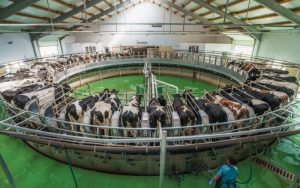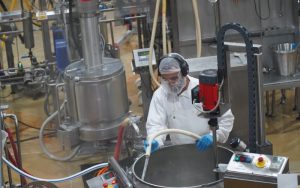
And the coal mining industry says cheap alternatives aren’t available yet.
Logan Church reports on New Zealand’s use of coal.
Five minutes out of Huntly, in the northern Waikato, lies New Zealand’s second largest open-cast coal mine.
Last year it dug out about half a million tonnes of coal – a small percent of the more than 2.8 million tonnes of coal produced across New Zealand.
New Zealand also imported more than 1.8 million tonnes – a number that had increased over recent years.
“I don’t think most people would be aware that when they go to the supermarket, they are filling their trolleys with meat and dairy and vegetables that all have been produced with coal. The steel that’s on their roof, the concrete that’s in their floor,” said Patrick Phelps of Minerals West Coast, an advocacy group for the coal industry, told 1News at the coal mine.
And he’s right.
According to its website, a third of Fonterra’s sites rely on coal, especially in the South Island where it says there is no gas or “feasible alternatives”.
It’s a similar story for vegetable greenhouses that can’t access natural gas – and coal remains an essential ingredient in steel and concrete production.
The Meat Industry Association said last year red meat processors and exporters were committed to reducing and eventually eliminating the use of coal but achieving that by the government’s intended 2037 end date for coal burners “will be difficult”.
Coal is also used for emergency power regeneration.
“We’ve got a housing crisis – we’ve got to produce more steel and cement,” said Phelps. “The cost of food is going up – we’re going to have to produce more food.”
“No one is doing it for its sex appeal.”
The reason why coal was used was quickly summed up by Cindy Baxter, of Coal Action Network Aotearoa.
“It’s cheap – you dig it up and burn it,” she said.
“But now we know it’s not so cheap because we know of the damage it causes to the climate.”
Coal Action Network Aotearoa was campaigning to phase out both coal mining and coal usage by 2027 – 10 years ahead of the 2037 target.
“The minute you start digging [coal] up you destroy what’s on top of it – and when you burn it it puts Co2 into the atmosphere which causes climate change.”
Coal is the most carbon intensive fossil fuel – i.e. it puts out more carbon dioxide than anything else when it is burnt.
And Baxter said our society’s reliance on the rock was having an immeasurable impact on climate change.
“We don’t see the cost of Westport being underwater twice a year, Gisborne being underwater,” she said.
She said countries around the world were scrambling to find alternatives.
“If you drive down any pine plantation in this country, you’ll see piles of wood – all that slash just being burnt – that could be used for biomass,” she said.
“That’s the really big application that we need to look into – to make sure we have enough woody biomass to replace the coal in those boilers.”
Many coal users were trailing, investigating or have started transitioning to using biomass.
Phelps said cost was still a significant issue, as the alternatives could not beat the fact that coal was cheap.
“Where people are using coal – it’s effectively to produce the products they produce at the price consumers are willing to pay – it’s the only option they’ve got.”
He pointed out that NZ’s coal sector was also heavily regulated to mitigate climate impacts.
But Baxter said the cost saved now would be overshadowed by looming cost of inaction over climate change.
“We need to start weighing up those costs – the cost-of-living crisis is happening this year. I don’t think anyone is talking about replacing all coal this year, but we have to gradually move into it,” said Baxter.
“The money we will save from reducing climate impacts is priceless.”
























